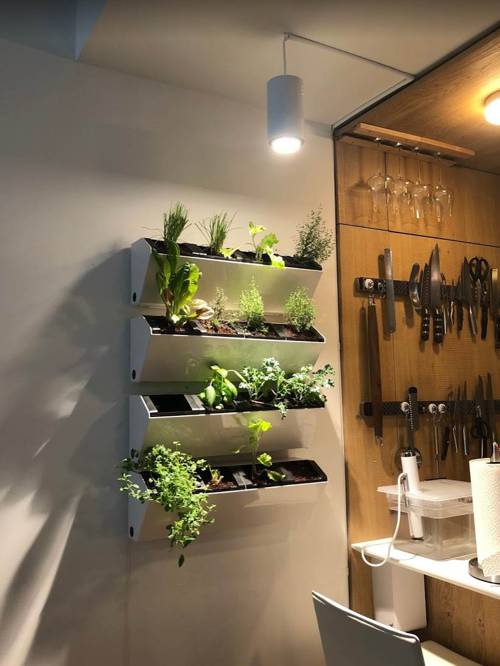
FAQ About Indoor Plant Growth Light Technology Advances

What are the recent advancements in indoor plant growth light technology?
Recent advancements in indoor plant growth light technology include the development of LED lighting systems that are more energy-efficient and customizable. These systems allow for the adjustment of light wavelengths to suit the specific needs of different plant species, optimizing growth and yield. Additionally, smart lighting solutions have been introduced, enabling automation and integration with IoT systems for precise control over lighting schedules and intensity.

How do LED grow lights benefit indoor plants compared to traditional lighting?
LED grow lights are more energy-efficient and have a longer lifespan compared to traditional light sources like incandescent or fluorescent lights. They provide a full spectrum light that can be adjusted to meet the specific photosynthetic requirements of plants. This flexibility helps in enhancing plant growth, flowering, and fruit production while reducing electricity costs and heat output.

What is the importance of light spectrum in plant growth lights?
The light spectrum is crucial for plant development because different wavelengths correspond to various stages of plant growth. Blue light aids in vegetative growth, while red light is important for flower and fruit development. Advanced grow lights offer tunable spectra to provide plants with the exact light they need at different stages, thereby maximizing growth efficiency and yield.

Can smart grow lights help in reducing electricity usage?
Yes, smart grow lights can significantly reduce electricity usage by allowing for automation and optimization of light delivery. These systems can be programmed to provide light only when necessary, adjusting intensity and duration according to plant needs, thus conserving energy and lowering electricity bills.

How do automated growth light systems work?
Automated growth light systems utilize sensors and smart technology to monitor the conditions of the growing environment and adjust lighting accordingly. These systems can be controlled remotely and offer features like scheduling, dimming, and spectral control to optimize plant growth and energy efficiency.

What are full-spectrum grow lights?
Full-spectrum grow lights are designed to mimic natural sunlight, providing a range of wavelengths that covers the entire spectrum of light that plants can utilize for photosynthesis. This includes UV to infrared light, which allows for optimal growth conditions throughout the plant's life cycle.

How have IoT developments impacted indoor grow light technology?
The integration of IoT (Internet of Things) technology in indoor grow lights has enhanced capabilities for monitoring and controlling grow environments. With IoT, users can access real-time data, receive alerts, and adjust settings remotely, fostering precision agriculture practices that improve plant health and productivity.

Are there any health benefits to using advanced indoor growth lights for plants?
Advanced indoor growth lights contribute to healthier plants by providing optimal lighting conditions tailored to their specific needs. This leads to stronger growth, more robust flowering, and greater yields, which ultimately results in better nutritional value and aesthetic quality of the plants.

What types of plants benefit the most from indoor growth lights?
Most indoor plants can benefit from growth lights, especially those that require specific light conditions for optimal growth. Common plants include vegetables like tomatoes and peppers, herbs such as basil and mint, and flowering plants like orchids and succulents that thrive under controlled lighting conditions.

Do indoor growth lights pose any risks to plants?
While indoor growth lights generally support plant health, excessive exposure or incorrect light spectrum settings can harm plants. It's essential to tailor the light scheduling, intensity, and spectrum to suit the specific requirements of the plant species being grown to avoid any potential stress or damage.

How can indoor growth lights improve plant yields?
Indoor growth lights can enhance plant yields by providing consistent and optimal light conditions year-round, regardless of external weather conditions. With precise control over light spectrum and intensity, these lights promote efficient photosynthesis, leading to healthier plants and increased productivity.

What is the role of ultraviolet (UV) and infrared (IR) light in plant growth?
Ultraviolet (UV) light can stimulate certain plant-specific pigments and enhance defense mechanisms, while infrared (IR) light is important for heat management and can influence flowering and fruiting. Advanced growth lights can include UV and IR settings to further enhance plant health and development.

Can growth lights simulate seasonal changes for plants?
Yes, modern growth light systems can simulate seasonal changes by adjusting the light spectrum and intensity to mimic different times of the year. This is particularly useful for plants that rely on seasonal cues for flowering and fruiting, allowing for better control of the growth cycle.

Are there any sustainable benefits of using modern indoor growth lights?
Modern indoor growth lights, especially LED-based systems, offer significant sustainability benefits. They consume less energy, have a longer lifespan, and produce less heat, reducing the overall carbon footprint of indoor gardening. Additionally, they support local food production, cutting down on transportation emissions.

How does dimming technology in growth lights affect plant growth?
Dimming technology allows growers to adjust the light intensity according to the plants' growth stages, ensuring they receive the right amount of energy without overexposure. This helps in managing plant stress and can lead to more efficient resource use and healthier plant development.

What are some common misconceptions about indoor growth lights?
A common misconception is that all plants will grow well under any type of grow light, whereas each plant species has specific light requirements. Additionally, some believe grow lights can completely replace natural sunlight, but while they can replicate key aspects, they might not capture all the benefits of sunlight entirely.

How do advanced growth lights contribute to vertical farming?
Advanced growth lights are integral to vertical farming as they provide essential light energy to stacked plants in indoor environments. Their ability to optimize space and provide uniform light distribution helps in maximizing productivity per square meter, a critical aspect of successful vertical farming.

What factors should be considered when selecting an indoor grow light?
When selecting an indoor grow light, consider factors such as the light spectrum offered, energy efficiency, heat output, adjustability of the light settings, and the specific needs of the plants you are growing. Budget and integration with existing smart systems might also influence your choice.

How can growth lights be integrated into smart home systems?
Growth lights can be integrated into smart home systems via IoT connectivity, allowing users to control them through smartphones or voice-activated assistants. This integration can help streamline the operation of indoor gardens, where settings can be adjusted based on real-time environmental data and user preferences.

What are the cost implications of using advanced indoor growth lights?
While the initial investment for advanced indoor growth lights, particularly LED systems, may be higher than traditional lighting, the long-term savings in energy costs, reduced maintenance, and improved plant yields can justify the expense. They are more cost-effective over time in providing consistent and efficient plant growth solutions.
